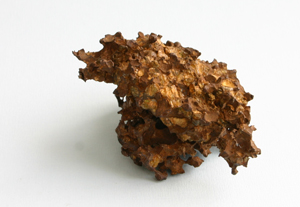The Krasnoyarsk Meteorite

This irregular piece of iron is really a meteorite. The famous Petrus Camper received it as a gift from his German collegue Peter Simon Pallas around the year 1780. However, Camper had no idea what is really was. The very existence of meteorites was unknown in those days.
Pallas was the representative of the Russian Academy of Sciences in Saint Petersburg. Camper corresponded with him about the characteristics of African and Asian rhinoceroses. During a expedition to Siberia he came across an 800-kilo lump of iron that had been found south of Krasnoyarsk in 1749. The indigenous Tartars considered it to be a holy relic that had fallen from the sky.
Pallas himself never commented about its origin, though he did conclude that no iron veins nearby had ever been exploited. Also there was no forge nearby and he couldn’t imagine how an object so huge could have been transported to a place so remote.
Pallas had the meteorite brought to Saint Petersburg. Small parts of it were sent to different scientific centres in the world. This little piece went to Camper. Scientists pondered the question whether iron in this form naturally existed, or whether it had been worked.
Since then, meteorites like these been have been known as ‘pallasite’. Only 61 examples are known of world wide. Besides metal, they also have stony components. It would take another ten years until the German physicist Ernst Chladni proved the existance of metorites. Camper had died by then.

